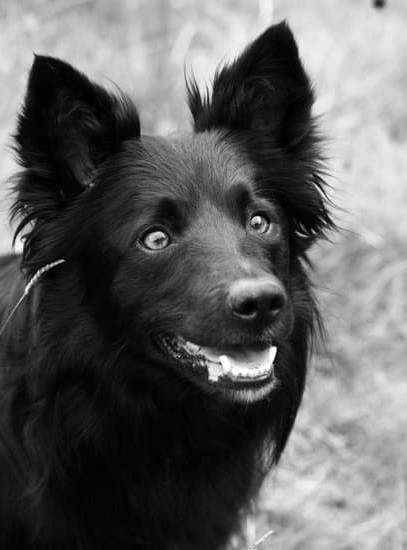Training your dog to wear diapers can be a valuable skill for both you and your furry companion. Dog diapers can provide comfort and convenience in certain situations, such as during house training, when your dog is in heat, or if they have medical conditions that cause them to have accidents. However, it is crucial to train your dog properly to wear diapers to ensure their comfort and cooperation.
One of the main benefits of using dog diapers is the convenience they offer. They can save you from constantly having to clean up after accidents, especially during house training or when dealing with senior dogs who may have bladder control issues. Diapers also provide a hygienic solution for dogs in heat or those recovering from surgery.
However, it’s not enough just to put a diaper on your dog and hope for the best. Training your dog to wear diapers is vital for their comfort and well-being. Some dogs may initially resist wearing diapers due to unfamiliarity or discomfort. Training them ensures that they become acclimated and even cooperative when it comes time to put on the diaper.
If you are hesitant about training your dog to wear diapers, rest assured that with patience and consistency, most dogs can learn this skill successfully. This article will guide you through the process of training your dog step-by-step, addressing common concerns, understanding your dog’s needs and behavior, building positive associations, troubleshooting challenges, and transitioning off-leash or overnight use of diapers.
By investing time and effort into training your dog to wear diapers, you are not only making their life more comfortable but also improving the quality of life for yourself. So let’s dive into the world of dog diaper training and explore how it can benefit both you and your furry friend while ensuring a happy and harmonious household environment.
Understanding Your Dog’s Needs and Behavior
When it comes to training your dog to wear diapers, it is crucial to have a deep understanding of your furry friend’s needs and behavior. Every dog is unique, with their own personality, breed traits, and specific needs. By taking the time to observe and understand your dog, you can tailor the training process to suit their individual characteristics.
Start by familiarizing yourself with your dog’s personality and breed traits. Different breeds may have different sensitivities or reactions to wearing diapers. For example, smaller dogs may be more comfortable with diapers due to their size, while larger breeds may take some time getting used to the sensation.
Additionally, consider any existing behavioral issues that could affect the training process. If your dog has a history of anxiety or fearfulness, it may be necessary to address those issues before beginning diaper training.
During the training process, pay close attention to your dog’s behavior and cues. Dogs communicate through body language, so observing them closely can help you understand their emotions and comfort levels. Look for signs of stress or discomfort such as pacing, panting excessively, or trying to remove the diaper.
On the other hand, positive signs include relaxed body language and wagging tail. By understanding these cues, you can adjust your approach accordingly and ensure that your furry friend feels safe and secure throughout the training process.
| Date | Training Session | Behavior Observations |
|---|---|---|
| October 3rd | First introduction of diaper | Dog showed hesitation but eventually allowed diaper placement after positive reinforcement. |
| October 5th | Attempted voluntary diaper placement | Dog seemed uncomfortable and tried to remove the diaper. Need to adjust training approach. |
By keeping track of your dog’s progress in this way, you can identify any patterns or issues that may arise and adjust your training techniques accordingly. Remember, each dog is unique, so patience, consistency, and adaptability are key during this process. Understanding your dog’s needs and behavior will set you up for success in training them to wear diapers comfortably and with ease.
Getting Your Dog Comfortable with the Diaper Material
Once you have selected the most suitable type of diaper for your dog, it is important to focus on getting them comfortable with the diaper material. Dogs can be sensitive to new textures, smells, and sensations, so taking the time to introduce the diaper gradually will help them adjust more easily. Here are some techniques to help your dog get comfortable with the diaper material:
- Gradual Introduction: Start by placing the clean and unfolded diaper in an area where your dog spends a lot of time. Allow them to sniff and investigate it at their own pace. You can also try rubbing a piece of your dog’s favorite treat or toy on the outside of the diaper to create a positive association.
- Positive Reinforcement: Whenever your dog shows curiosity or approaches the diaper willingly, praise and reward them with treats or verbal praise. This helps reinforce positive associations with the diaper.
- Familiarize with Smell and Feel: Before putting the diaper on your dog, let them explore it further by allowing them to sniff and touch it while you hold it in your hands. Gently touch or rub it against their fur so they can become familiar with its feel.
- Diaper Dress-Up Game: Turn getting dressed in a fun game for your dog by treating it as a game rather than a chore. Hold up the open diaper near their hindquarters and reward them when they show interest or allow you to bring it closer without resistance.
- Gradually Add-On: Once your dog is comfortable with interacting with the unfolded diaper, start folding it partially and rewarding them for showing acceptance and tolerance towards this folded version. Gradually increase the amount of folding each time until they are accustomed to wearing fully folded diapers.
Remember that patience is key during this process, as some dogs may take longer than others to get used to wearing diapers. It’s important not to rush or force your dog into wearing diapers before they are ready. Observing your dog’s behavior and providing positive reinforcement will go a long way in making the training process a positive and enjoyable experience for both of you.
Building Positive Associations and Rewards
Building positive associations and using rewards are essential components of training a dog to wear diapers. Dogs are more likely to cooperate and engage in desired behaviors when they are motivated by positive reinforcement. By associating wearing diapers with rewards, you can make the training process enjoyable for your dog and increase their willingness to participate. Here are some tips for building positive associations and using rewards effectively:
Importance of Positive Reinforcement
Positive reinforcement involves rewarding your dog for displaying the desired behavior, in this case, wearing diapers. It is crucial to focus on rewarding your dog when they willingly put on or allow you to put on the diaper, reinforcing their cooperation. Using positive reinforcement strengthens the bond between you and your dog and encourages them to repeat the behavior in the future.
Tips for Using Treats, Praise, and Play
Using treats, praise, and play as rewards can be highly effective in building positive associations with wearing diapers. Choose high-value treats that your dog finds particularly enticing, such as small pieces of cooked chicken or cheese. When your dog shows any signs of acceptance or tolerance toward the diaper, immediately reward them with treats or lavish praise. Incorporate playtime after successful diaper sessions to provide an additional source of enjoyment for your dog.
Reward-Based System
Implementing a reward-based system throughout the training process can help reinforce positive behaviors consistently. Establish clear criteria for what constitutes success at each stage of training. For example, reward your dog when they allow you to fasten the diaper without resistance or when they wear it for a specific duration without trying to remove it themselves. Gradually increase the expectations as your dog becomes more comfortable with wearing the diaper.
Remember that dogs have different preferences when it comes to rewards. Some may be more food-motivated, while others respond better to verbal praise or playtime. Observe what rewards are most effective for your dog and adjust your training methods accordingly. Consistency and patience are key during this process, as building positive associations and trust takes time. By using rewards effectively, you can make wearing diapers a positive experience for your dog and increase their comfort and cooperation.
Step-by-Step Training Process
Introduction to the Step-by-Step Training Process
Training your dog to wear diapers may seem like a daunting task, but with a step-by-step approach, you can make the process smooth and successful. This section will guide you through the training process, breaking it down into manageable steps. By following these steps and being patient and consistent, you will help your dog become comfortable and accepting of wearing diapers.
Gradual Introduction of the Diaper
To start the training process, introduce your dog to the diaper gradually. Begin by allowing your dog to sniff and investigate the diaper while offering praise or treats for positive behavior. Place the diaper on a flat surface near your dog during mealtime or playtime so they can get used to its presence. This step helps create positive associations and reduces any fear or discomfort your dog might have towards the diaper.
Next, introduce touch by gently touching your dog’s body with the diaper. Start with areas such as their back or tail that are less sensitive. Gradually progress to areas like their stomach or hindquarters. Use treats or toys to distract them from any initial discomfort.
Teaching Your Dog to Wear the Diaper
Once your dog is comfortable with the presence and touch of the diaper, move on to actively teaching them how to wear it. Begin by holding up the open diaper in front of your dog and rewarding them for showing interest or positive behavior towards it. Slowly work towards draping it over their back, securing only one side at first.
Encourage your dog to walk around while wearing the partially secured diaper by using treats or toys as motivation. Gradually increase the time they spend wearing it until they are comfortable walking around freely.
When your dog has adjusted well to wearing a partially secured diaper, proceed with securing both sides without fastening it tightly. Allow them ample time to get accustomed to the feeling of the snug diaper, while continuously praising and rewarding positive behavior.
Troubleshooting Challenges and Setbacks
Throughout the training process, it’s essential to be patient and understanding. Remember that each dog is unique, and they may have their own pace of learning. If your dog shows resistance or fear towards wearing the diaper, take a step back and go at a slower pace. Offer more rewards, praise, or playtime to create positive associations.
If your dog consistently tries to remove the diaper, distract them with toys or treats to redirect their attention. Gradually increase the time they spend wearing it until they are comfortable for longer periods.
If your dog experiences discomfort or irritation from wearing diapers, ensure that you are using the correct size and type of diaper. Double-check for any signs of chafing or rubbing and adjust accordingly. Seeking advice from a veterinarian can also help address any specific concerns related to your dog’s comfort.
Remember that consistency is key in successful training. Practice regularly and remain patient throughout the process. Soon enough, your dog will become comfortable with wearing diapers, allowing for greater convenience and peace of mind for both you and your furry friend.
Maintenance and Care of Dog Diapers
Dog diapers are an essential tool for many pet owners, providing convenience and comfort for both dogs and their owners. However, proper maintenance and care of dog diapers are crucial to ensure their effectiveness and prevent any discomfort or irritations for your furry friend. In this section, we will discuss the importance of hygiene, tips for cleaning and maintaining the diapers, and address any concerns about odor control and leaking issues.
Proper hygiene is vital when it comes to maintaining dog diapers. Regular changes of the diapers are necessary to avoid bacterial growth, skin irritations, and unpleasant odors. Depending on your dog’s needs and the type of diaper used, you may need to change the diaper every few hours or as recommended by the manufacturer. It is essential to monitor your dog closely for any signs of discomfort or irritation that may indicate a need for a diaper change.
Cleaning the dog diapers correctly is also crucial in maintaining proper hygiene. Most reusable dog diapers can be machine washed but always check the instructions provided by the manufacturer before cleaning. Using a mild detergent that is free from harsh chemicals or fragrances will help prevent any allergic reactions or skin irritations. It is recommended to air-dry the diapers or use low heat settings on your dryer to avoid damaging the material.
Addressing odor control is another common concern for many pet owners using dog diapers. To minimize odors, you can try using odor-neutralizing sprays or powders specifically designed for pet products on both reusable and disposable diapers. Additionally, regular bathing of your dog can help keep them smelling fresh even when wearing a diaper.
Leaking can be another issue that arises with using dog diapers. Ensuring a proper fit is key in preventing leaks. Take accurate measurements of your dog’s waist size before purchasing a diaper and choose one that fits snugly without causing discomfort or constriction. Additionally, some types of dog diapers come with adjustable tabs or straps that allow you to customize the fit for your dog’s specific needs.
Taking good care of the dog diapers not only ensures your dog’s comfort and hygiene but also extends the lifespan of the product. Proper maintenance and cleaning will help you save money in the long run, as reusable diapers can be used multiple times with proper care.
Gradual Transition to Off-Leash and Overnight Diaper Use
One of the ultimate goals when training a dog to wear diapers is to have them be able to wear them off-leash and even overnight. This allows for greater convenience and freedom for both the dog and the owner. However, it is important to approach this transition gradually and with patience.
To begin the transition to off-leash diaper use, start by allowing your dog some supervised free time without their leash while wearing the diaper. This can be done indoors or in a secure, fenced area outdoors.
Observe their behavior and body language closely during this time to ensure that they are comfortable and not exhibiting any signs of distress or discomfort. If they seem nervous or hesitant, you may need to take a step back and continue on-leash diaper use until they become more accustomed.
Once your dog seems comfortable wearing the diaper off-leash, you can slowly increase the duration of time that they wear it. Start by allowing them short periods of unsupervised time off-leash, gradually building up to longer stretches as your dog becomes more confident and used to wearing diapers independently.
The transition to overnight diaper use follows a similar process. Begin by having your dog wear the diaper during their regular sleeping routine while still under supervision. Monitor their comfort level and behavior throughout the night. If they seem restless or uncomfortable, consider adjusting the fit of the diaper or consulting with your veterinarian for additional guidance.
As your dog becomes more accustomed to wearing diapers overnight, you can gradually extend the duration of time that they spend in them while sleeping. Increase incrementally each night until your dog is able to comfortably sleep through an entire night wearing a diaper.
It is crucial throughout this transition process to monitor your dog’s progress closely and provide plenty of positive reinforcement and rewards for their cooperation. Celebrate each milestone achieved along the way, whether it be successfully wearing diapers off-leash or overnight.
Remember that every dog is unique and will progress through these transitions at their own pace. Be patient, consistent, and responsive to your dog’s needs throughout the training process. With time and effort, you can successfully train your dog to wear diapers off-leash and overnight, providing both you and your furry friend with increased comfort and freedom.
Troubleshooting and Additional Tips
Training a dog to wear diapers can sometimes come with challenges along the way. In this section, we will address common issues that may arise during the training process and provide some additional tips to help make the training experience more successful.
One common challenge that dog owners may encounter is resistance or difficulty in getting their dog to wear the diaper. If your dog seems hesitant or resistant, it’s important to remain patient and not force them into wearing it. Instead, try gradually introducing the diaper by allowing your dog to sniff and familiarize themselves with it before attempting to put it on.
You can also try using treats, praise, or play as positive reinforcement for wearing the diaper. Remember to take small steps and reward your dog for any progress they make.
Another challenge that may arise is leakage or odor control issues. To prevent leaks, ensure that you are using the correct size and type of diaper for your dog’s breed and body shape. Adjust the diaper properly so that it fits snugly without causing discomfort.
Additionally, consider using absorbent pads or liners inside the diaper for extra protection against leaks. For odor control, regularly change the diapers and dispose of them in a proper manner. It’s also important to clean your dog’s genital area before putting on a new diaper to prevent any unpleasant odors.
In addition to troubleshooting common challenges, here are some additional tips to assist you in training your dog to wear diapers:
- Consistency is key: Stick to a regular routine when it comes to wearing diapers. Establish set times for putting on and removing them so that your dog becomes accustomed to this routine.
- Gradual increase in wearing time: Start by having your dog wear the diaper for short periods of time and gradually increase the duration as they become more comfortable with it.
- Use positive reinforcement: Continuously reward your dog with treats, praise, or play whenever they demonstrate cooperation with wearing the diaper. This will strengthen their positive association with the diaper.
- Seek assistance if needed: If you are facing significant challenges or your dog is exhibiting unusual behavior during the training process, don’t hesitate to seek guidance from a professional dog trainer or veterinarian experienced in behavioral issues.
By troubleshooting and implementing these additional tips, you can overcome challenges and make the training process smoother and more successful. Remember, each dog is unique, so it’s important to tailor your approach to suit their individual needs and personality. With patience, consistency, and positive reinforcement, you can help your dog become comfortable and happy wearing diapers.
Conclusion
In conclusion, training your dog to wear diapers can greatly improve their quality of life and provide numerous benefits for both you and your furry companion. Throughout this article, we have discussed the importance of understanding your dog’s needs and behavior, getting them comfortable with the diaper material, building positive associations and rewards, following a step-by-step training process, and maintaining and caring for the diapers.
By following these guidelines, you can successfully train your dog to wear diapers and embrace the convenience and comfort they offer.
It is important to celebrate your success in training your dog to wear diapers. This accomplishment not only benefits you by making your life easier and more convenient but also improves your dog’s overall well-being. Whether it’s managing incontinence issues, preventing accidents during house training, or providing comfort during heat cycles or travel, dog diapers are a valuable tool that can greatly enhance your dog’s quality of life.
Additionally, as you navigate through the training process, it’s always helpful to seek support from the wider community of dog owners. Sharing success stories, seeking advice from other experienced trainers or reaching out for assistance when facing challenges can make the journey smoother and more enjoyable.
There are numerous online forums and communities where you can connect with fellow dog owners who have trained their dogs to wear diapers. These platforms provide a wealth of knowledge, encouragement, and support that will help you overcome any hurdles that come your way.
Frequently Asked Questions
How do you train a dog to use a diaper?
Training a dog to use a diaper involves patience, consistency, and positive reinforcement. It’s essential to introduce the dog to the diaper gradually, allowing them to sniff and explore it in a non-threatening manner. Start by putting the diaper near their bedding area or letting them see it while they eat.
Once they are comfortable with its presence, you can try putting the diaper loosely around their waist for short periods of time. Reward them with treats or praise whenever they tolerate wearing it without fussing. Over time, gradually increase the duration of wearing the diaper until your dog becomes accustomed to it.
Can I make my dog wear diapers?
It is possible to make your dog wear diapers if circumstances require it, such as for house training, incontinence issues or during certain stages of heat cycles in female dogs. However, before doing so, it’s important to consult with your veterinarian.
They can provide guidance on whether diapers are suitable for your specific dog and situation, taking into consideration factors like breed, size, and any preexisting medical conditions.
Is it OK for dogs to wear diapers everyday?
Dogs can wear diapers everyday if necessary or recommended by a veterinarian; however, whether or not it is okay depends on various factors. Using diapers long-term should only be considered after exploring other solutions and under veterinary guidance. Regular use of diapers may be appropriate for dogs suffering from urinary or fecal incontinence or during certain stages of heat cycles in females when preventing unwanted pregnancies is crucial.
Nevertheless, frequent diaper usage may cause discomfort or skin irritation if not managed properly. It’s crucial to ensure that proper hygiene measures are taken and that the diap

Welcome to the blog! I am a professional dog trainer and have been working with dogs for many years. In this blog, I will be discussing various topics related to dog training, including tips, tricks, and advice. I hope you find this information helpful and informative. Thanks for reading!





